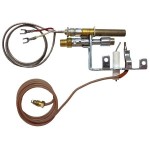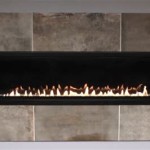The Alluring Appeal of Outdoor Fireplace Pits: A Comprehensive Guide
Outdoor fireplace pits have become increasingly popular features in residential and commercial outdoor spaces. Their appeal stems from a unique combination of warmth, ambiance, and social functionality. More than just a source of heat, an outdoor fireplace pit serves as a focal point, encouraging gatherings and extending the usability of patios, decks, and yards well into the cooler months. This article will explore the various aspects of outdoor fireplace pits, encompassing their benefits, types, safety considerations, and maintenance requirements.
The incorporation of an outdoor fireplace pit can significantly enhance the aesthetic appeal of any outdoor area. Regardless of the architectural style of the residence, a well-chosen fireplace pit can complement and elevate the existing design. The flickering flames create a captivating visual display, fostering a relaxing and inviting atmosphere. Beyond the visual aspects, the crackling sound and the radiant warmth contribute to a sensory experience that is both comforting and engaging.
Functionally, outdoor fireplace pits provide a reliable source of heat, enabling individuals to enjoy their outdoor spaces even during colder seasons. This extended usability is particularly valuable in regions where the weather fluctuates significantly. With a fireplace pit, homeowners can host gatherings, enjoy outdoor meals, or simply relax and unwind in a comfortable environment, regardless of the prevailing temperature. Furthermore, the open flame often serves as a natural deterrent to insects, further enhancing the outdoor experience.
Benefits of Incorporating an Outdoor Fireplace Pit
The advantages of investing in an outdoor fireplace pit extend far beyond mere aesthetics. A well-designed and properly installed unit can significantly improve the lifestyle of a homeowner and increase the value of the property.Extended Outdoor Season: Perhaps the most significant benefit is the extension of the outdoor season. In many regions, the use of patios and decks is limited to the warmer months. An outdoor fireplace pit provides a substantial source of heat, allowing homeowners to enjoy their outdoor spaces for a longer period. This is particularly valuable in climates with significant temperature fluctuations.
Enhanced Ambiance: The ambiance created by an outdoor fireplace pit is unparalleled. The flickering flames, the crackling sounds, and the radiant warmth combine to create a relaxing and inviting atmosphere. This ambiance is ideal for social gatherings, romantic evenings, or simply unwinding after a long day. The visual appeal of the flames can transform an ordinary outdoor space into an extraordinary one.
Increased Property Value: An outdoor fireplace pit can add significant value to a property. It is often viewed as a desirable feature by prospective buyers, enhancing the curb appeal and overall market value of the home. The presence of a fireplace pit suggests that the property is well-maintained and designed for comfortable outdoor living.
Social Gathering Point: Outdoor fireplace pits naturally encourage social interaction. People tend to gather around the warmth and light of the flames, fostering conversation and camaraderie. A fireplace pit provides a comfortable and inviting space for hosting gatherings with friends and family, creating lasting memories.
Types of Outdoor Fireplace Pits
The market offers a wide variety of outdoor fireplace pits, each with its own unique characteristics, fuel types, and design aesthetics. Understanding the different types available is crucial in selecting a unit that best suits individual needs and preferences.
Wood-Burning Fireplace Pits: These are the traditional type of fireplace pits, fueled by wood logs. They provide a classic, rustic ambiance with the authentic crackling sound and aroma of burning wood. Wood-burning units typically require more maintenance than other types, as they produce ash and require regular cleaning. Regulations regarding open burning must also be considered.
Gas Fireplace Pits: Gas fireplace pits are fueled by either propane or natural gas. They offer greater convenience than wood-burning units, as they eliminate the need to gather and store firewood. Gas fireplaces are also cleaner, producing no ash or smoke. They can be easily ignited and extinguished with the turn of a knob, providing instant heat and convenient temperature control. Gas fireplace pits require connection to a gas line or propane tank.
Propane Fireplace Pits: These units utilize portable propane tanks as their fuel source. Propane fireplace pits offer greater flexibility in terms of placement, as they are not tethered to a gas line. They are a good option for individuals who want to be able to move their fireplace pit around their outdoor space. However, propane tanks need to be refilled or exchanged regularly.
Natural Gas Fireplace Pits: Natural gas fireplace pits are connected to a permanent natural gas line. This option provides a continuous and reliable fuel source, eliminating the need for propane tank refills. Natural gas units typically require professional installation due to the gas line connection.
Gel Fuel Fireplace Pits: Gel fuel fireplace pits use canisters of gel fuel as their fuel source. These units are typically smaller and more portable than other types of fireplace pits. Gel fuel fireplace pits produce a clean-burning flame with minimal smoke or odor. They are a good option for individuals who want a small, portable fireplace pit for occasional use.
Safety Considerations for Outdoor Fireplace Pits
While outdoor fireplace pits provide numerous benefits, it is essential to prioritize safety when operating and maintaining these units. Implementing proper safety measures can significantly reduce the risk of accidents and injuries.
Clearance Requirements: Maintaining adequate clearance around the fireplace pit is crucial for preventing fires. Keep flammable materials, such as furniture, trees, and dry vegetation, at a safe distance from the unit. Consult the manufacturer's instructions for specific clearance recommendations. Generally, a minimum of 10 feet of clearance is recommended.
Supervision: Never leave a burning fireplace pit unattended. Always supervise the unit while it is in operation. Ensure that children and pets are kept at a safe distance from the flames. A responsible adult should be designated to monitor the fire and ensure that it is extinguished properly.
Extinguishing the Fire: When finished using the fireplace pit, ensure that the fire is completely extinguished. For wood-burning units, douse the embers with water and stir them until they are cool to the touch. For gas fireplace pits, turn off the gas supply and allow the unit to cool down completely. Always follow the manufacturer's instructions for extinguishing the fire.
Carbon Monoxide Safety: Although outdoor fireplace pits are generally used in open-air environments, it is important to be aware of the potential risk of carbon monoxide poisoning. Ensure that the unit is properly ventilated and that there are no obstructions that could restrict airflow. Never use an outdoor fireplace pit indoors or in enclosed spaces.
Local Regulations: Be aware of local regulations and restrictions regarding open burning. Some municipalities may have restrictions on the types of fuel that can be used, the size of the fire, or the hours during which burning is permitted. Contact your local fire department or city hall for more information.
In addition to safety, proper maintenance is essential for ensuring the longevity and optimal performance of an outdoor fireplace pit. Regular cleaning and inspections can prevent damage and ensure that the unit operates safely and efficiently.
For wood-burning units, regularly remove ash and debris from the fire pit. Use a shovel or ash vacuum to remove the ash after each use, or at least once a week. This will prevent the accumulation of ash, which can restrict airflow and reduce the efficiency of the fire.
Inspect the unit for any signs of damage, such as cracks, rust, or corrosion. Repair any damage promptly to prevent further deterioration. For gas fireplace pits, check the gas lines and connections for leaks. If you detect a gas leak, immediately turn off the gas supply and contact a qualified technician.
Clean the exterior of the fireplace pit with a mild soap and water solution. This will remove dirt and grime and help to maintain the appearance of the unit. Protect the fireplace pit from the elements when it is not in use. Cover the unit with a waterproof cover or store it in a sheltered location to prevent damage from rain, snow, and ice.
By following these safety and maintenance guidelines, individuals can safely and effectively enjoy the benefits of an outdoor fireplace pit for many years to come. The warmth, ambiance, and social functionality that these units provide can significantly enhance the outdoor living experience.

12 Best Outdoor Fire Pit Ideas Diy Backyard

Should I Install An Outdoor Fireplace Or Firepit Jt Landscaping

60 Fire Pit Ideas And Diys

Best Outdoor Fire Pits At Inns Cabbi

Prescott Firepit No Sleeve Riviera Techo Bloc

The 5 Best Smokeless Fire Pits Of 2024 Reviews By Wirecutter

60 Fire Pit Ideas And Diys

Pin On Grill Place

5 Things To Know Before A Fire Pit Home Beautiful

5 Tips For Planning An Outdoor Fire Pit And Fireplace Shoreline Pools
Related Posts








